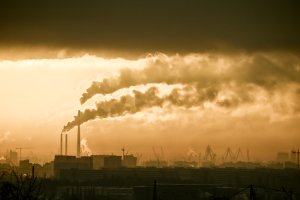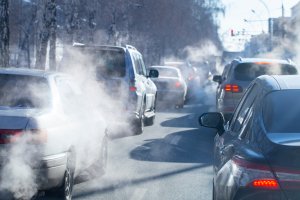Air Pollution, Ozone, and the Benefits of Trees and Parks
July 10, 2024
By: Ali Groulx, park interpreter
Neighborhoods are the lifeblood of Southeast Michigan. Good neighbors make lifelong memories – from long summer days playing in combined backyards with all the neighborhood kids to borrowing the proverbial cup of sugar from the person next door. Without them, collective engagement would be nearly impossible. Engaged neighbors lift each other up and share common goals, look out for each other, and help us get through good times and bad.

Neighborhoods can also have impacts not just on our happiness but also our health. Tree canopy cover, the amount of branches and leaves as viewed from above, varies dramatically from zip code to zip code. Areas that score higher on the tree canopy index have more shade, cooler temperatures during heat waves, better stormwater absorption during precipitation events, more wildlife habitat, and reduced air pollution. Especially in densely urban areas, these things make a big difference to health and wellbeing of residents along with making these communities more aesthetically appealing to tourists, visitors, businesses, and community members.
Air pollution and ozone are increasingly impacting southeast Michigan and neighborhoods with the lowest tree canopy levels may be most at risk of harm.
You can explore your city’s tree equity score here: americanforests.org
How did we get here?
In 1948, there was an extreme smog event in New England that caused the federal government to begin discussing air pollution as a major problem. Factories, industrial plants, and automobile emissions contributed to dense clouds over many cities, affecting the health of the population. To remedy this, the Air Pollution Control Act of 1955 authorized research and training programs to get to the bottom of it. This program was so successful that it was renewed several years in a row while Congress debated how to move forward with regulations. The Clean Air Act of 1963 was the first federal legislation to allow the United States government to take direct action to control air pollution, putting a cap on emissions from vehicles. The standard for emissions was lowered again in 1967, and by 1970, all 50 states had an air pollution prevention program.
The Clean Air Act was a monumental and important moment for American society. Everyday citizens recognized a problem and worked together to solve it, going to extreme lengths to improve their lives through the uncertainty of a new technology like automobiles. Today, the Clean Air Act has made substantial progress in terms of air quality. Wildfire smoke blowing over from the West plus an influx of small particulate matter pollution has challenged the effectiveness of the Clean Air Act, and these events continue to increase with climate change.

More Than Just Another Layer in the Atmosphere
Emissions from industrial plants and travelling automobiles also contribute to the creation of harmful ground-level ozone, which has a different effect than the stratospheric ozone that occurs miles above us. You may already be familiar with ozone action days – meaning that on that day, it is expected to be hot and sunny, allowing more emissions to chemically react and transform into ozone, or O3. In heavily urban areas, ground-level ozone and fine particulate matter are extremely tough to contend with, especially with fewer trees and green spaces to absorb or buffer the air quality. We are beginning to see positive change in these neighborhoods, with more green spaces to cleanse the air and community centers that provide a much-needed reprieve from the sweltering heat. The large trees that now line many roads in Metro Detroit have had 90 years to grow, however, many neighborhoods do not host trees of that age. The shade that older trees provide is paramount for the health of our communities, and the investment of planting and maintaining new trees goes a long way. As neighbors, we can understand the need to mitigate and uplift communities who carry an undue burden when it comes to the effects of climate change. Parks, from small city “pocket parks” to the 4,500 acres of Kensington Metropark can help all of southeast Michigan’s communities during heat waves and ozone action days by providing the benefits of trees and vegetation- not to mention pools, splash pads, and lake access!

In many cultures, there is a teaching that every person must guide their choices by how it will affect our ancestors seven generations from now. Every action and inaction have an effect, and if our choices are framed by thinking how they would shape reality seven generations into the future, it can help us feel empowered to do the right thing. Life is better with good neighbors and great neighborhood parks!
Sources:
American Lung Association – State of the Air
